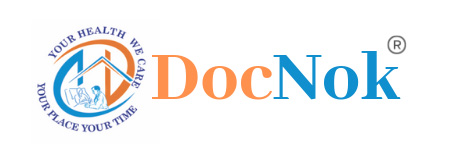Neck Pain
In every household we can see people from almost every age group having neck pain.
Most commonly affected people are from professions having long hours of Desk job, long standing hours with bent neck like doctors in operation theatres, computer professionals, etc.
It may be variable;
- Mild to severe pain
- Stiffness in neck
- Restricted movements
- Pain in shoulder area, upper back or radiating to arms, ear or head.
- Tingling, weakness or numbness that radiates to shoulders, arms or fingers.
What causes Neck Pain?
It can be caused due to multiple factors like:-
2. Muscle spasms
3. Neck injury
4. Herniated discs
5. Spinal infection
6. Spinal fracture
7. Spinal deformity
8. Spinal Tumours

Cause of the neck pain is diagnosed from detailed history of the patient along with examination and investigations like X-ray of cervical spine, MRI, CT scan as required.
How to Prevent Neck Pain?
As we tend to do most of the activities in a bowed down neck position (flexed), neck bending has to be compensated.
- Avoid spending prolonged time in positions that stresses or strains the neck. This also includes long study hours, long hours in kitchen, sitting at computers for a long time, etc.
- Even taking a 2 minutes break every half an hour will give relief to neck as well as eyes and helps in reducing the muscle strain.
- Regular exercise/yoga routine helps keeping correct postures and prevent complications henceforth.
CHECK FOR
- Pillows should be neither too hard nor too soft and also neither very thick and nor too thin.
- The position of sleep.
- The sitting posture.
- Be careful while lifting heavy weights.
- Avoid sleeping on stomach to prevent twisting of neck.
- Eating patterns and look for deficiencies like that of vitamin D and Calcium.
- Sedentary Lifestyle.

WHAT TO DO NOW?
If the neck pain did not start as the result of injury/trauma and is not severe; self care in the form of enough rest and hot/cold packs should be done.
One should avoid strenuous activities and movements which are causing more pain.
- Initially cold (ice) packs can be applied (covered in a cloth and never directly) to reduce swelling and pain. After some days, ice or heat can be applied on an alternate basis.
- Massage after applying ice or heat to soothe spasms and pain.
- Correct postures while sleeping, sitting, driving, studying and make modifications in lifestyle.
- Physiotherapy under expert guidance, ultrasound therapy, tractions, etc when in pain and neck & back exercises to be continued after the pain decreases or subsides.
- Pain killer and muscle relaxant medications for short term.
- To maintain correct posture and practice exercise on regular basis, along with precautions.
- Treat nutritional deficiencies if any







Leave a Reply
Want to join the discussion?Feel free to contribute!